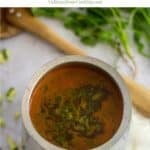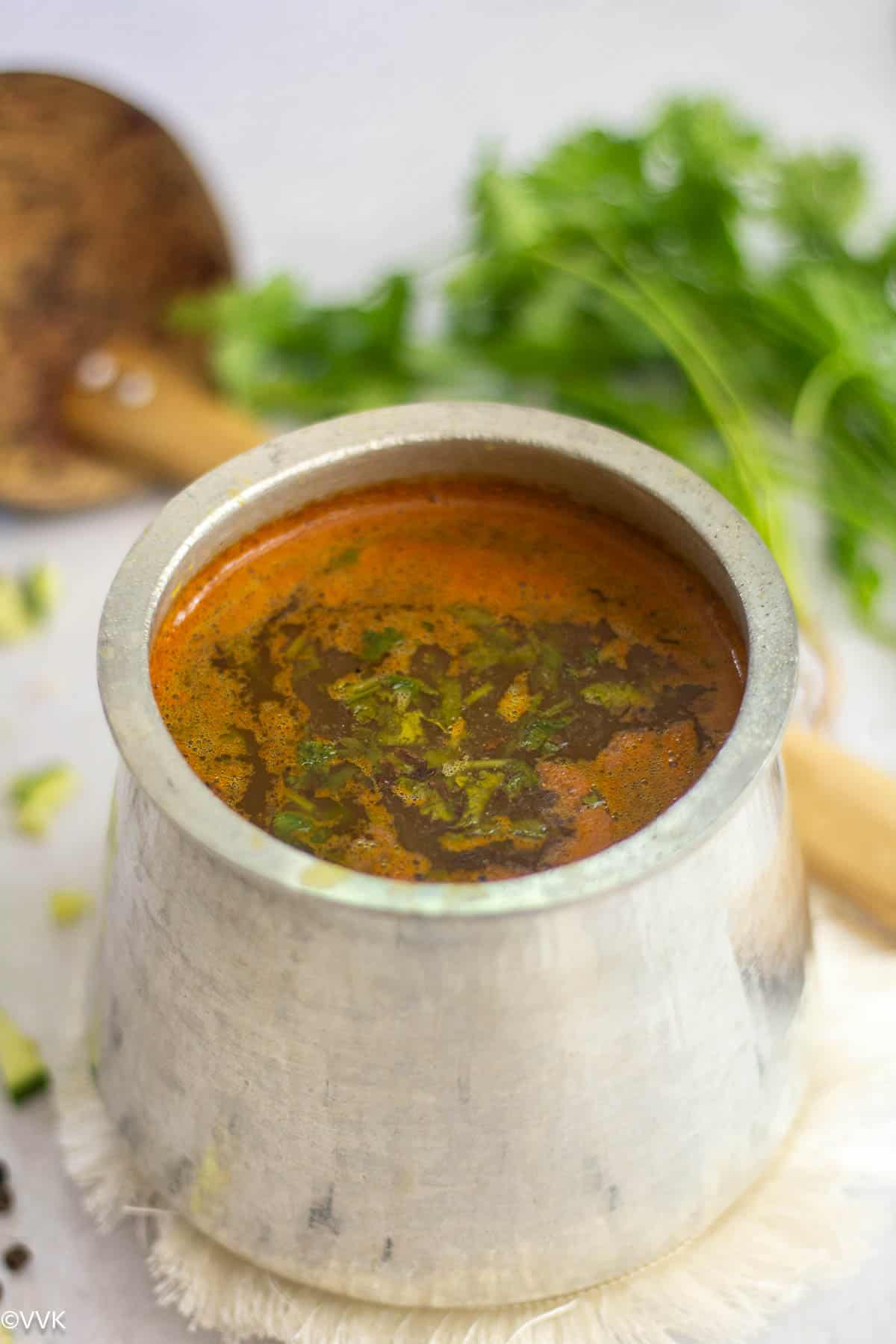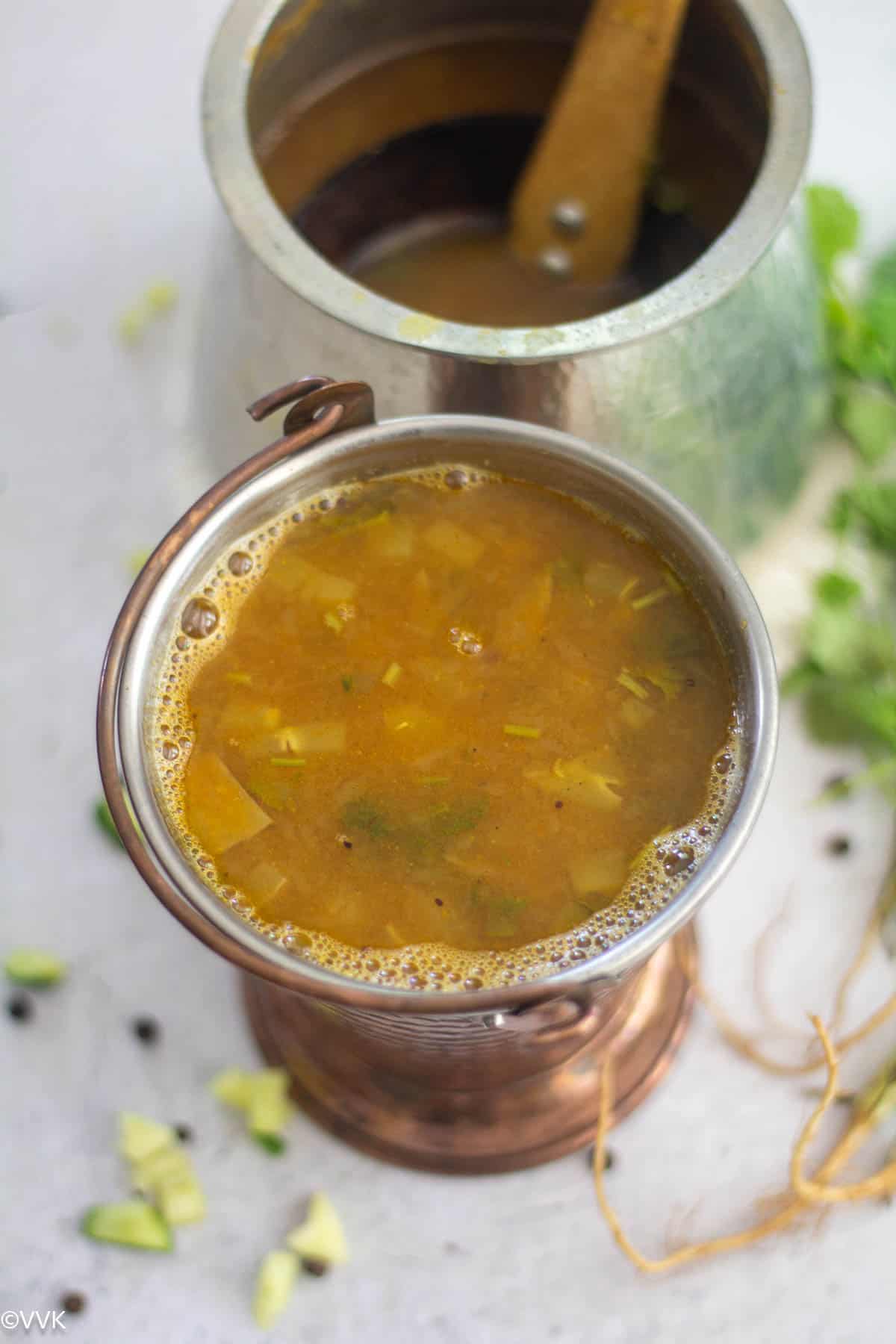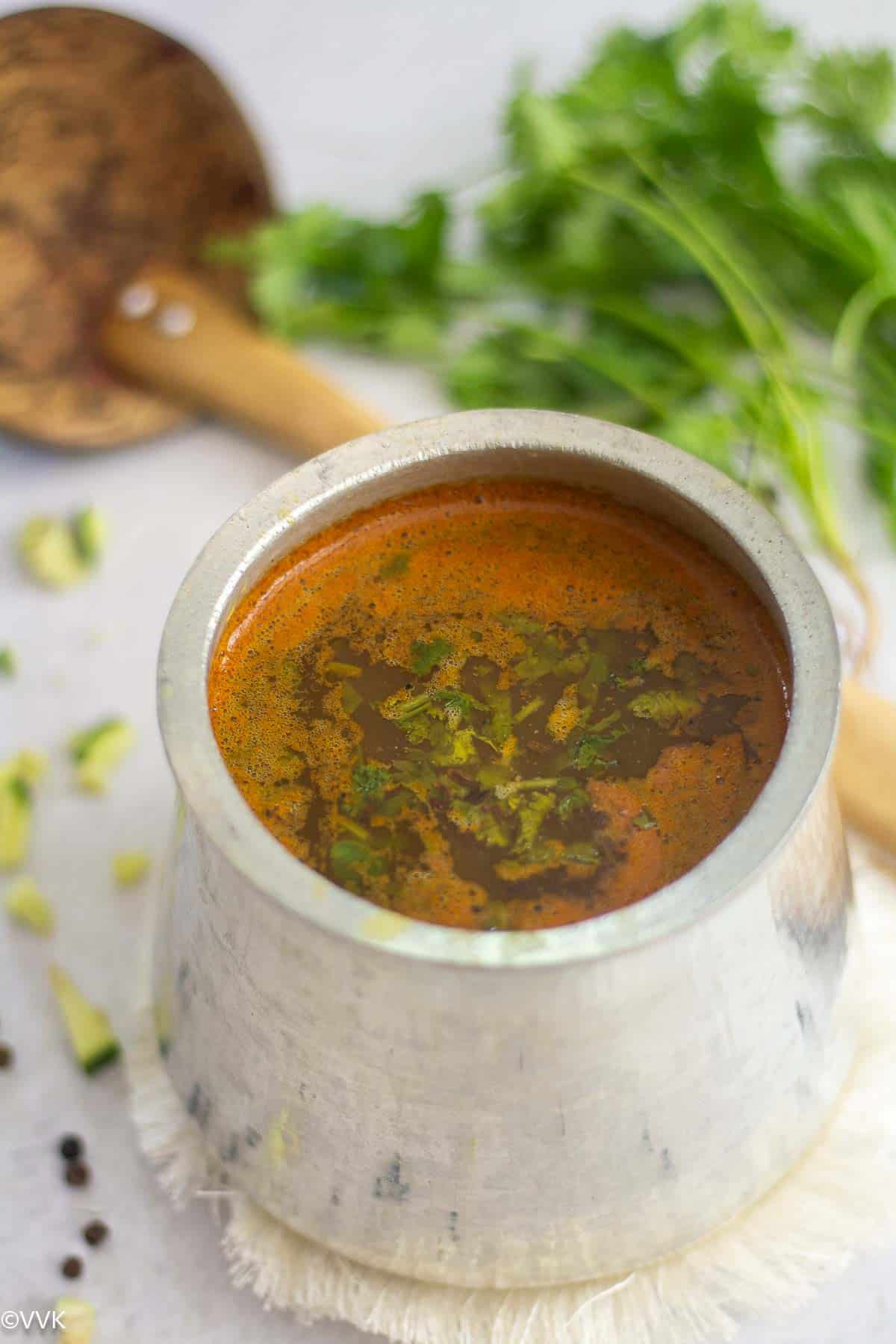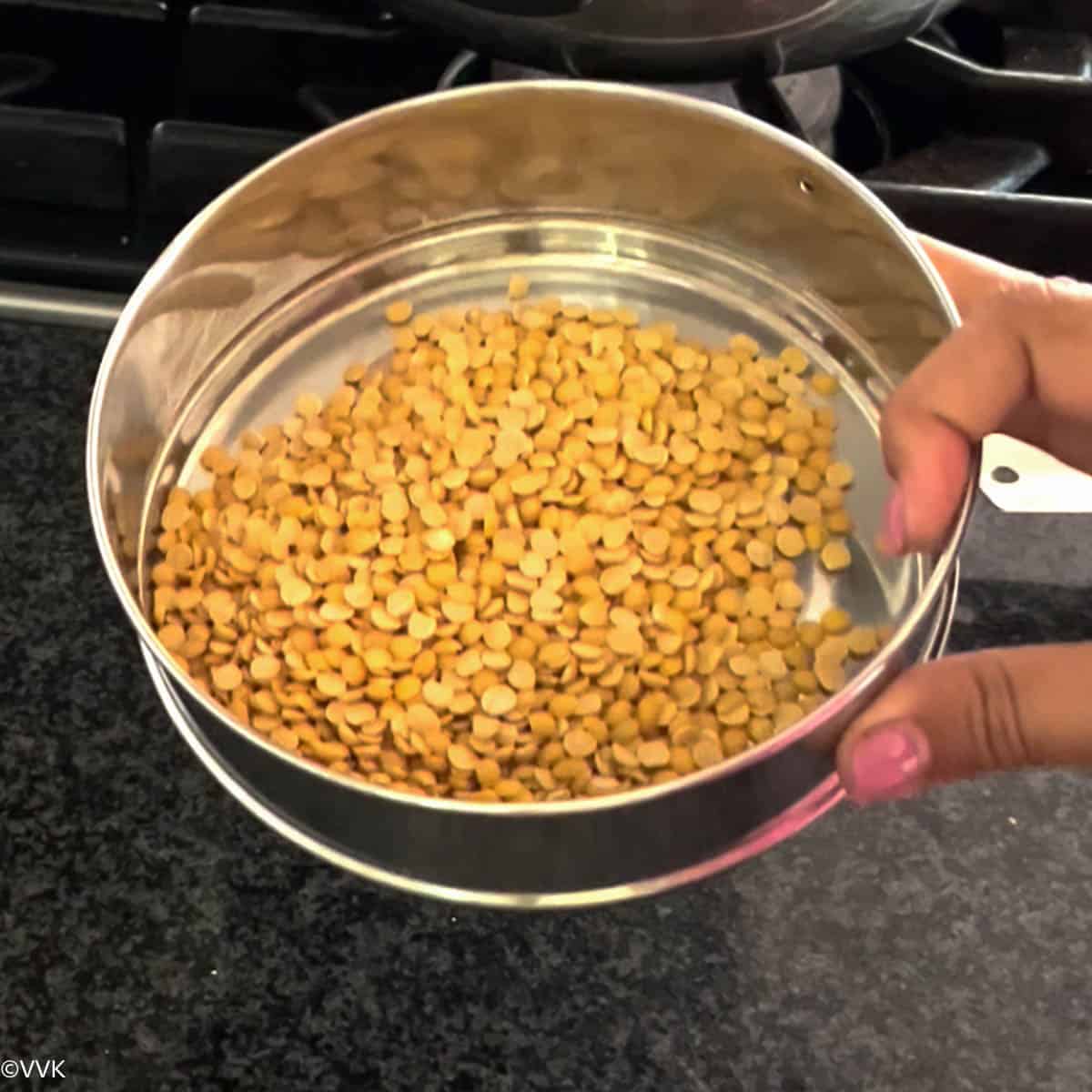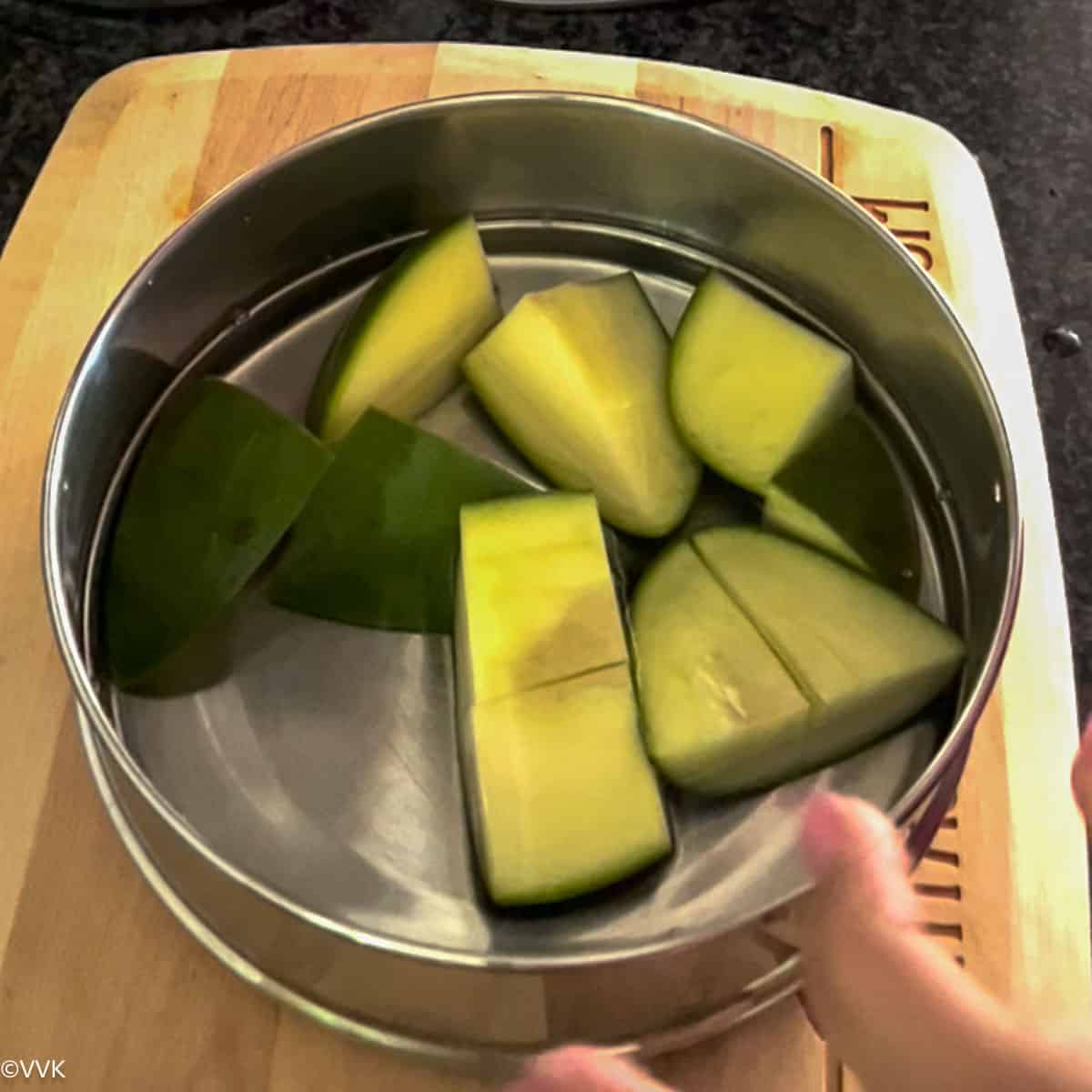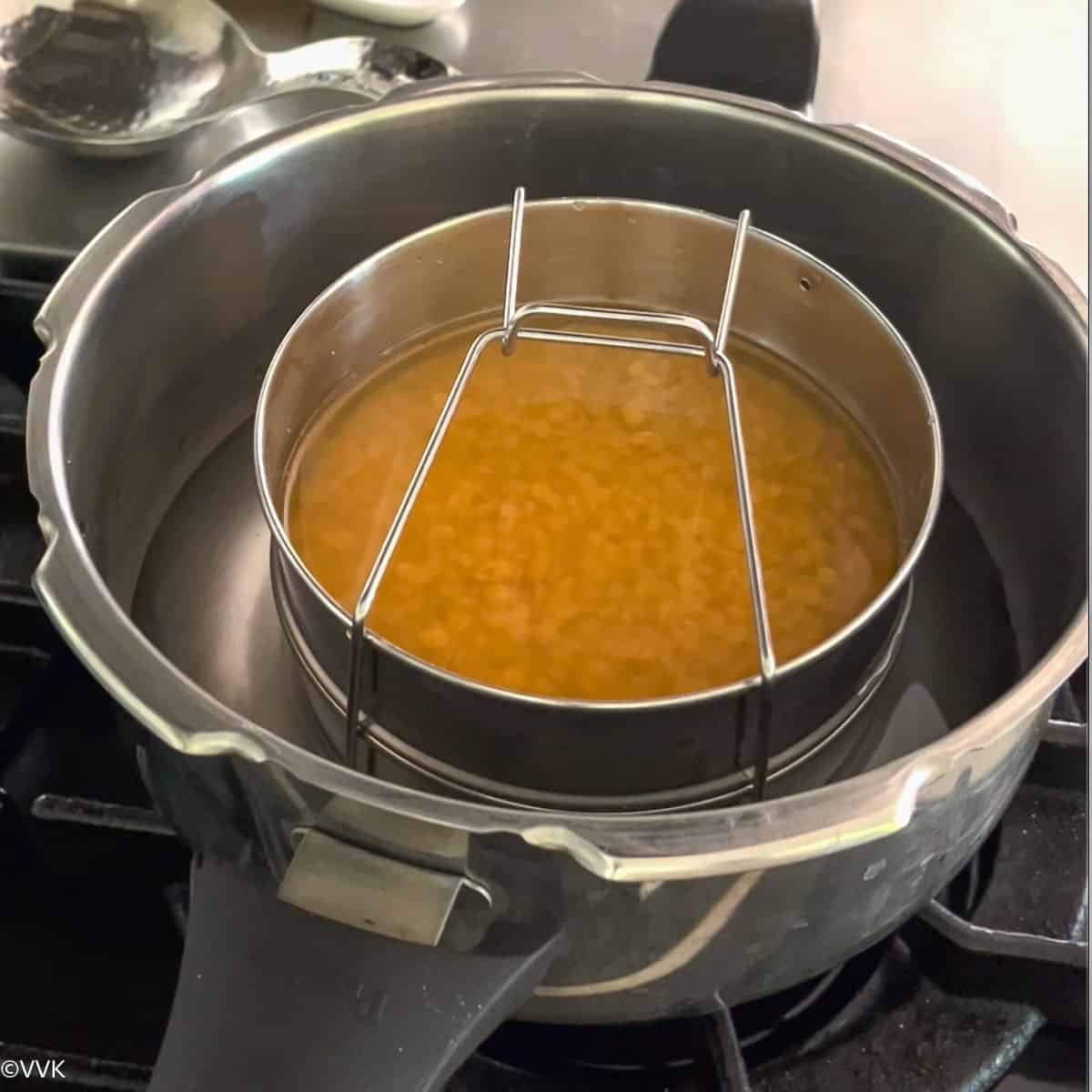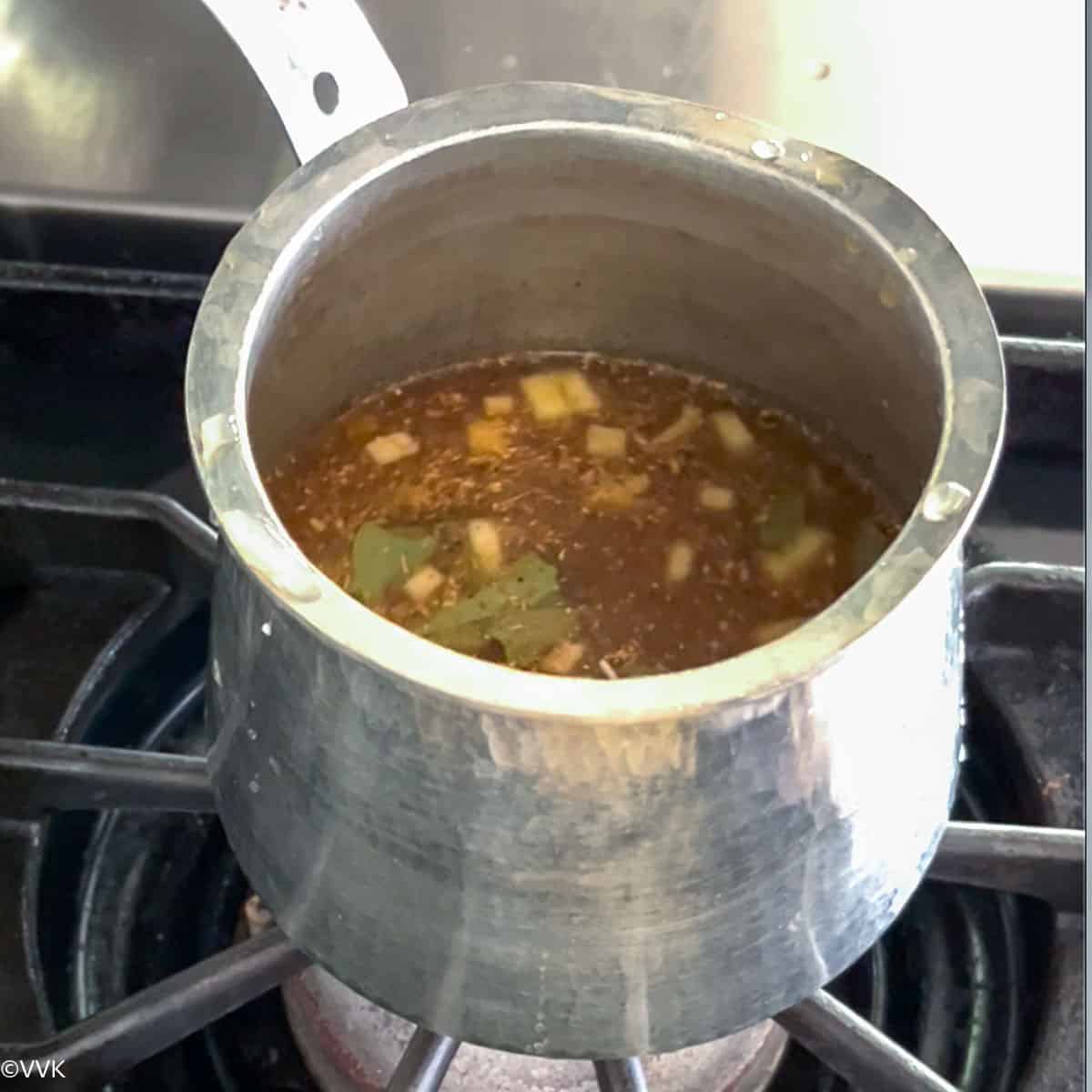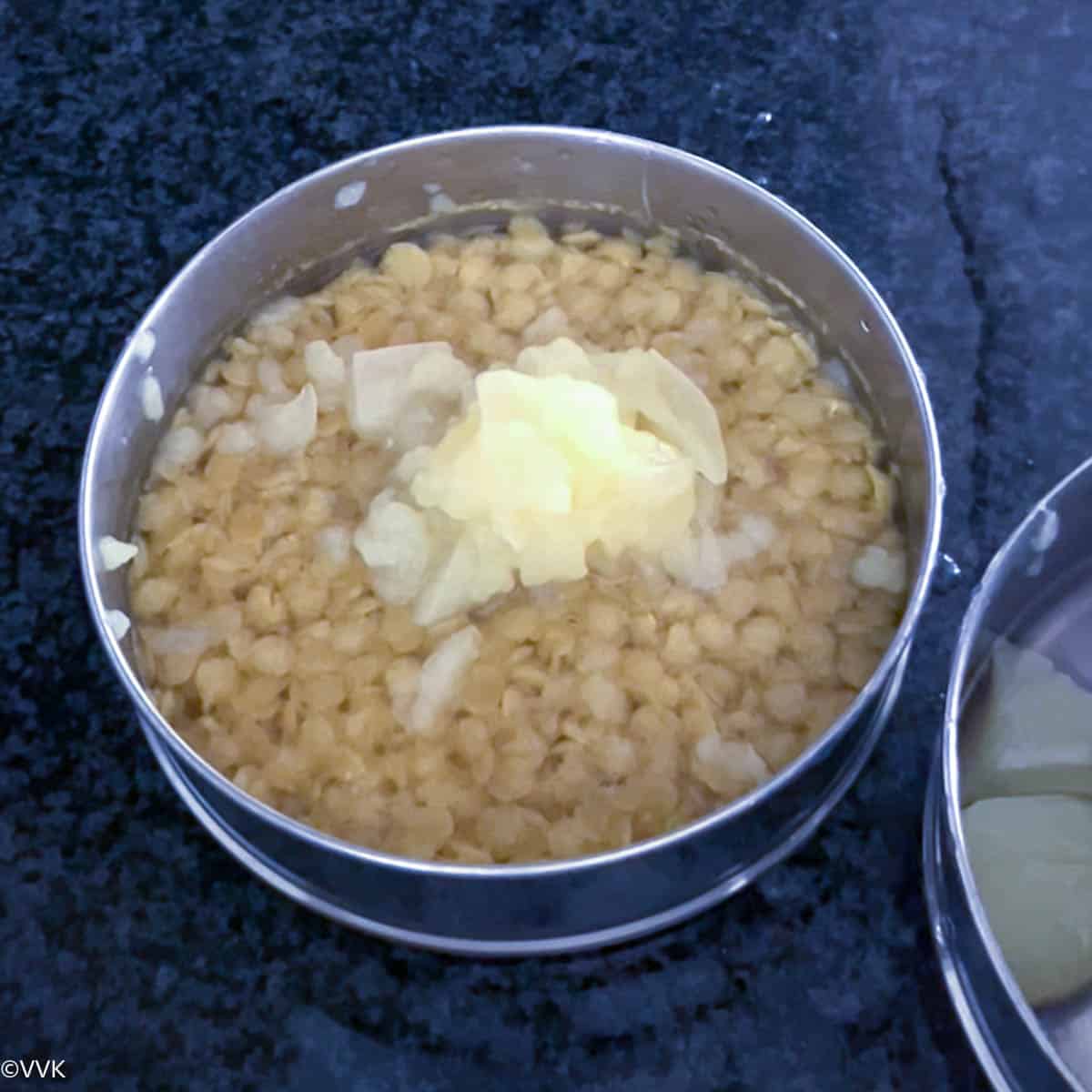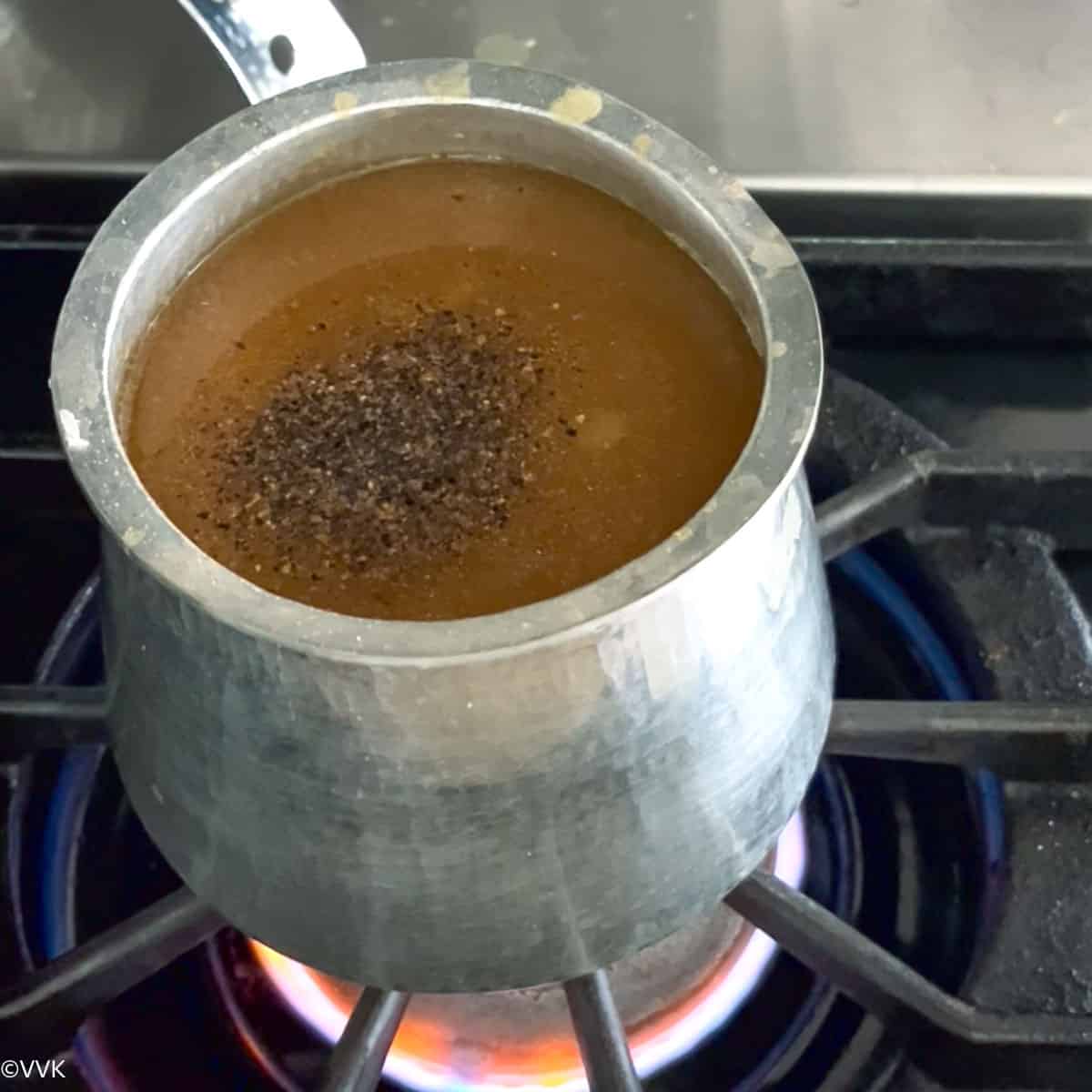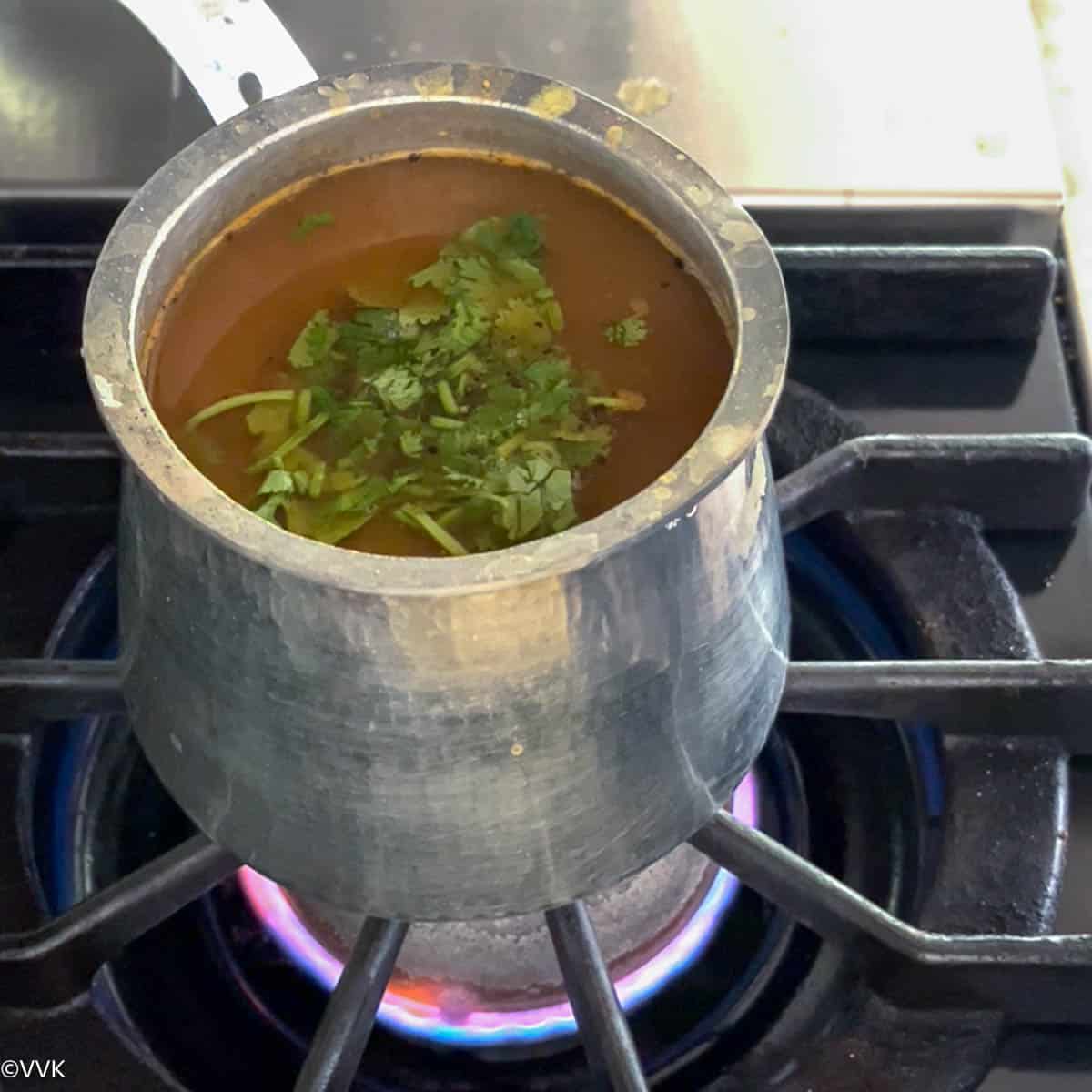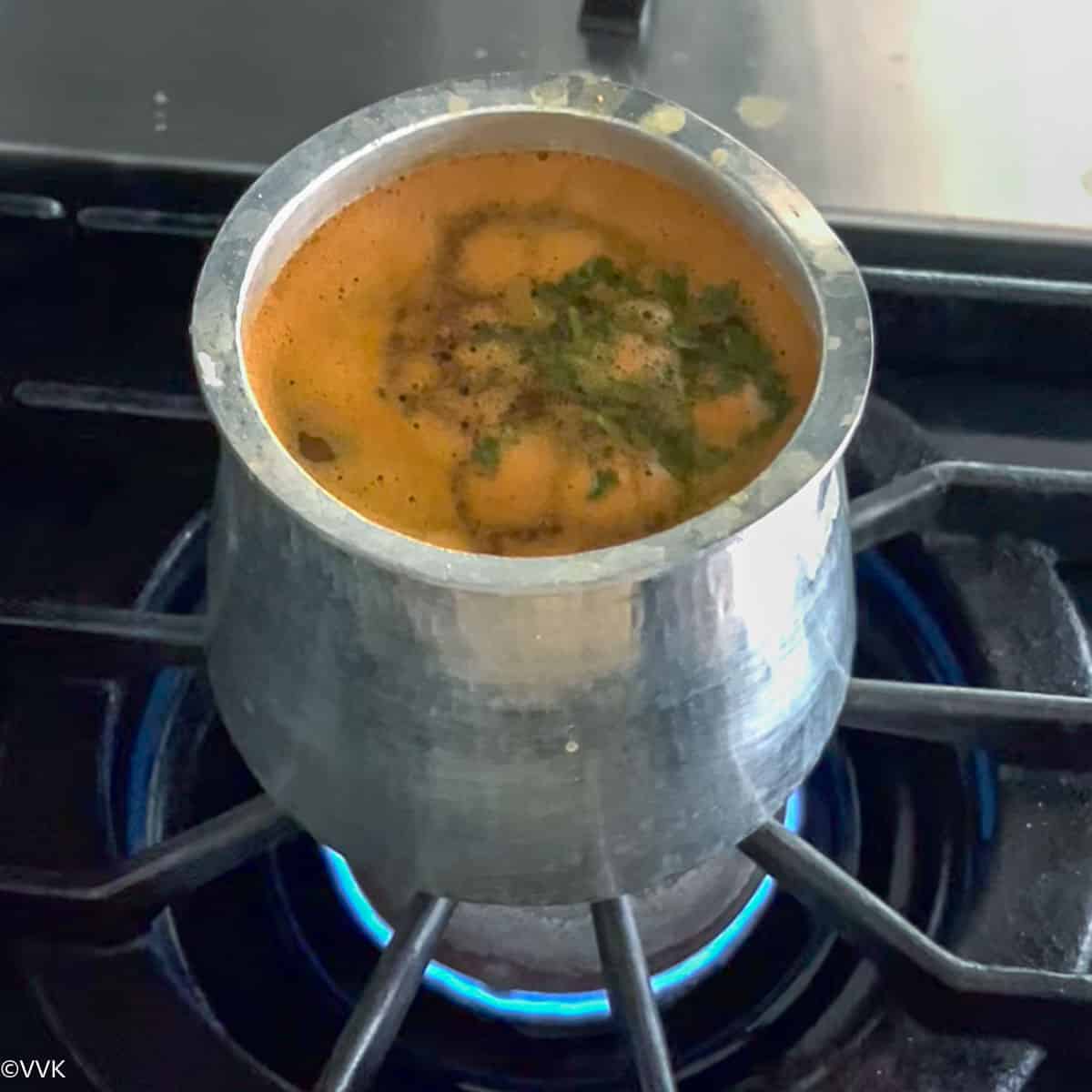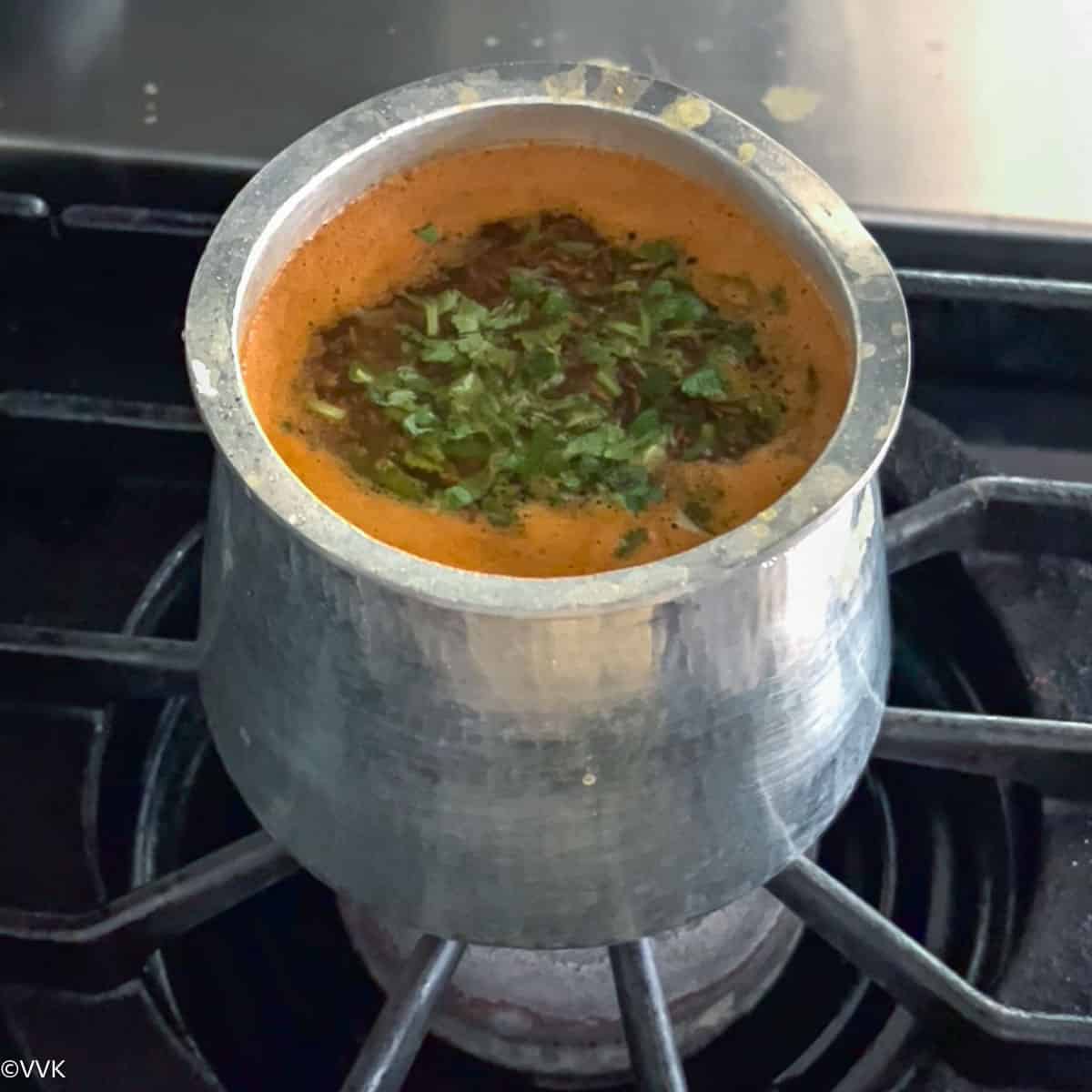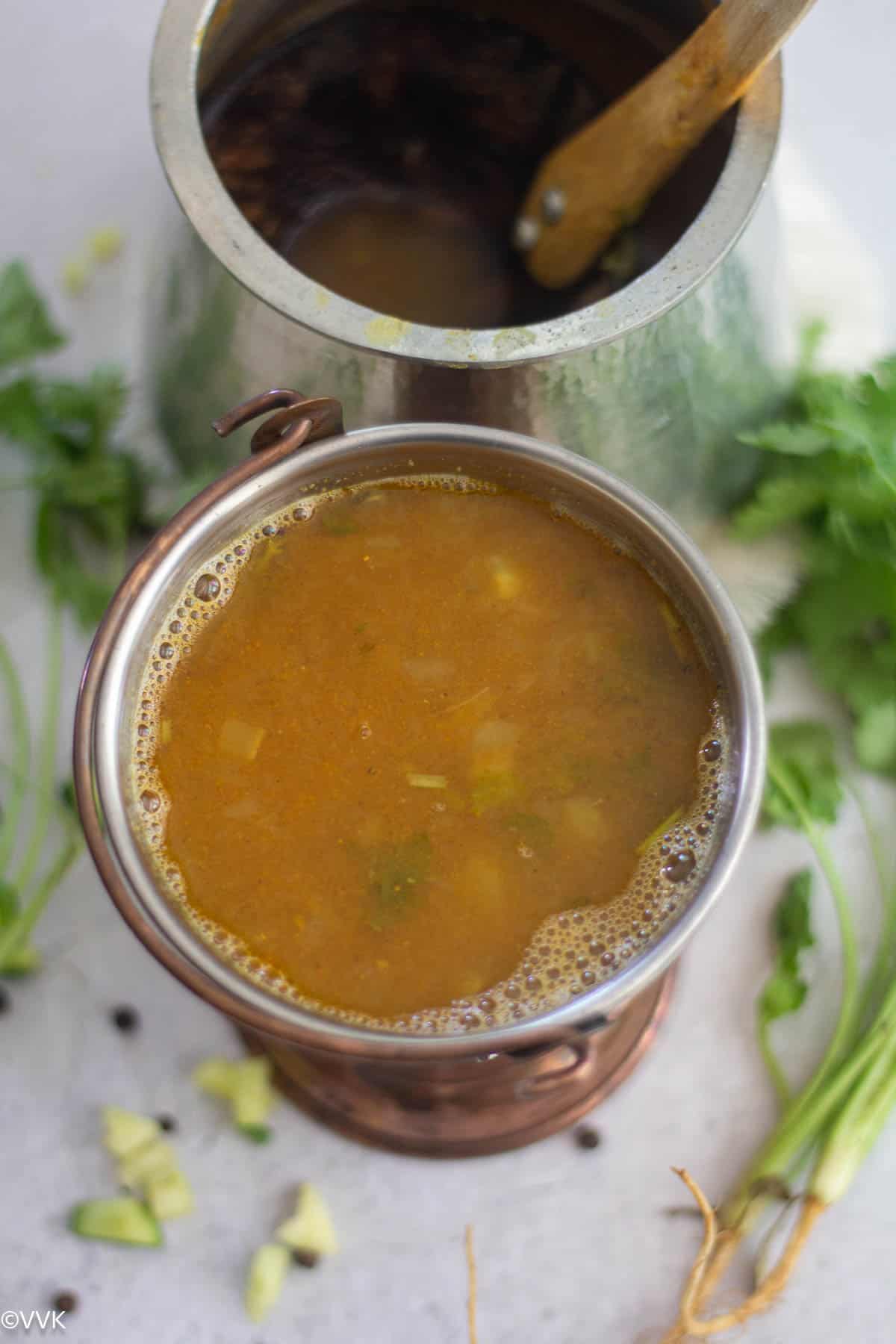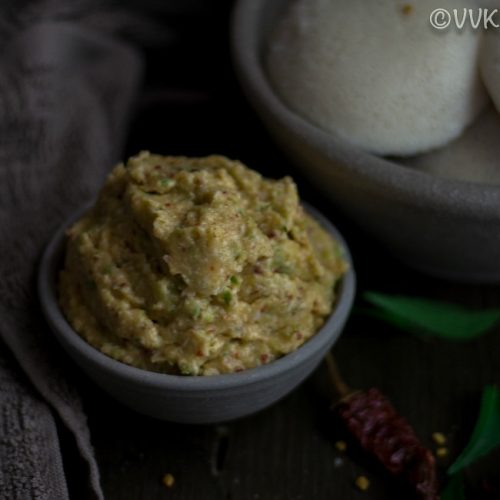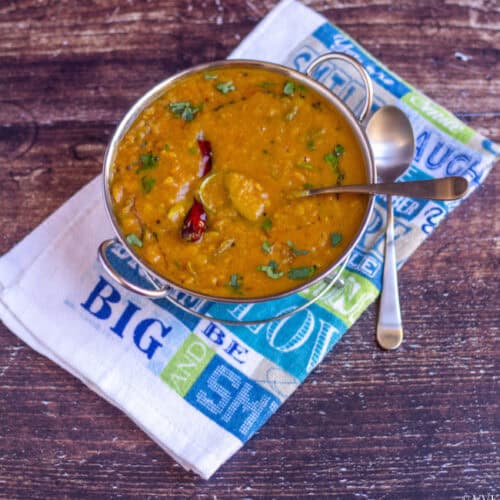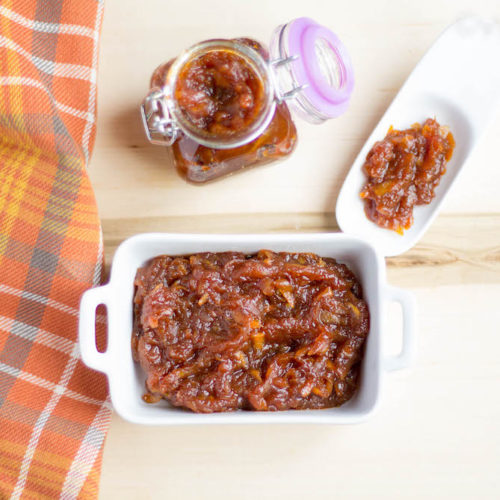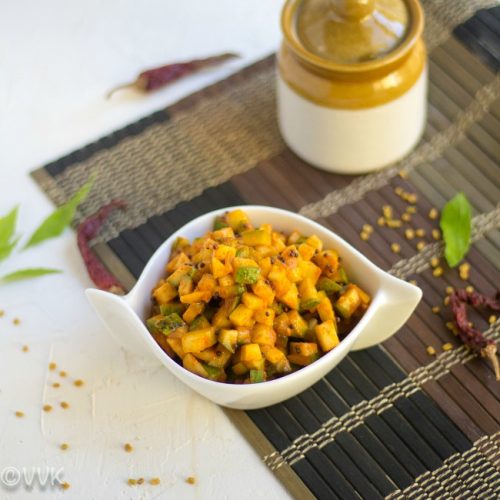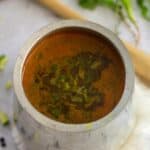As I mentioned in my previous rasam recipes, rasam is a South Indian soup with or without lentils. We usually make paruppu rasam, which is made with lentils and rasam powder. You can make a similar one with freshly ground spices, which we call arachuvitta rasam or Mysore rasam. You can also make instant Kerala-style rasam with ground chili and coriander, and yeah, let’s not forget the soothing and comforting jeera milagu rasam/cumin pepper rasam. Yes, there are so many varieties, and here is another rasam variety for you all to try – manga rasam, as we say in Tamil, and mavinakayi saru, as we say in Kannada.
What’s so special about raw mango rasam
This rasam is very similar to paruppu rasam, but there is one major difference. Instead of tamarind, we use raw mango for the sour and tangy flavor. I don’t use tomatoes for this rasam either, as I want the mango flavors to shine. I pressure cook one half of the mango and use the other half directly in the rasam to get a bite of that raw mango.
Ingredients required
Raw mango: I used 150 grams of small raw mango for this recipe. I got the variety that we get in the US Indian groceries. I recommend using a sour/tangy variety rather than a sweet one. But if your raw mango is not sour enough, add a small piece of tamarind or a small tomato. Toor dal: For paruppu rasam, we always use toor dal, but you can try moong dal or masoor dal. There will be slight taste changes, but you can experiment with any of these dals. Rasam powder: To spice up the rasam, we need the spice mix called rasam powder. I used my homemade rasam powder, but if you want store-bought ones, I recommend Grand Sweets brand rasam powder or 777 rasam powder. (not sponsored) Salt and ground pepper: The rasam powder does have pepper in it, but I always add freshly ground pepper to this mango rasam for added flavor. That’s optional. And, of course, we need salt to taste. Jaggery: A tad bit of sweetness helps to balance the flavor. But that’s optional. Curry leaves and cilantro: The two popular herbs we need for rasam are curry leaves and cilantro, which I have used for this rasam. I wouldn’t recommend Mint, as it overpowers everything. If you are interested, you can check my mint rasam recipe. Water: This rasam measure requires 4.5 to 5 cups of water. Adjust to your consistency preference. But for sure you need four cups. To temper: We need ghee, mustard, and cumin seeds to temper the rasam. For the exact measurements, check the recipe card.
Eeya sombu
The special vessel that imparts a unique flavor to rasam is the Eeya Sombu or Tin Alloy Vessel. In Tamil, it is referred to as Velli Eeyam. This vessel is a blend of tin and aluminium. There is often confusion about eeyam being mistaken for lead, a poisonous substance. However, the eeya sombu is made from a tin alloy. Tin melts at 250 degrees Fahrenheit and requires caution when simmering liquids in the vessel over low heat. It should never be heated empty. Furthermore, using vessel tongs (kidiki) on the eeyam sombu is not recommended; I prefer to handle it with a cloth when transferring it from the stove. For those interested, please refer to the video below for additional information and a demonstration of how I prepare rasam using the eeya sombu. While the eeyam sombu enhances the flavor of rasam, it is not essential, and rasam can still be made in a stainless steel pot or an Instant Pot.
Watch me make raw mango rasam in eeya sombu
Dietary specifications
This raw mango rasam is naturally nut-free, but for a vegan option, temper it with neutral oil and use gluten-free asafetida for a gluten-free version.
VVK tips
Rasam should be simmered until it becomes frothy. Boiling before adding the dal helps remove the raw smell of rasam podi. However, once the dal is added, it’s crucial not to let it boil further to preserve the flavors. After tempering, adding fresh cilantro and covering the rasam vessel allows the flavors to steep in. Adding a small piece of jaggery helps to balance the flavors.
What to serve it with-
While you can enjoy this rasam as a soup, we love it with hot steamed rice with gravy or dry curry. My personal favorites with this rasam are, You can also serve this papad or fryums.
How to make raw mango rasam
Cook the dal and half of the mango
Rinse the ¼ cup of toor dal and add 1 cup of water and ⅛ tsp of turmeric powder and gingelly oil in a vessel.
Clean the mango and deseed the mango. Chop one half roughly, add it to a vessel, and add ½ cup of water.
I used my pressure cooker separators to cook the dal and mango separately. You can use any two vessels of your choice.
The pressure cook for three whistles and release the pressure naturally. Let the dal and mango cool.
Prepare the rasam base and boil
Chop the other half of the mango into small pieces and take ¼ cup.
Add the chopped mango, rasam powder, curry leaves, asafoetida, salt, and two cups of water to the vessel you prepare. Mix well with your hand, and bring this mix to a boil.
Mash the dal and mango
By now, the dal and mango will be cool. Slowly remove the flesh from the cooked mango and add it to the toor dal. Discard the skin.
Mash the toor dal and the mango flesh thoroughly. Don’t discard the water used for cooking the mango. Add that to the dal mix.
Simmer the rasam
Once the rasam comes to a boil, add the toor dal, jaggery, and freshly ground pepper .
Add one tbsp of cilantro, reduce the heat to low and gently simmer the rasam.
When it becomes frothy on top, turn off the heat.
Add the tempering
Heat a tsp of ghee and temper mustard and cumin seeds in a separate tempering pan. As the mustard seeds start to splutter, add them to the rasam.
Add the remaining cilantro, cover the rasam, and let the flavors steep for 5 to 10 minutes. Then enjoy the rasam warm with rice or as a soup.
Recipe notes
I always add a small amount of gingelly oil when cooking dal. It helps the dal to cook mushy. With my current toor dal batch, I had to cook the dal and mango separately so that they would all be mushy. You can cook them together if your dal cooks nicely and softly without issues. You can use grated mangoes instead of chopped ones. Adjust the salt and spice to taste. The ground pepper and jaggery are optional.
More raw mango recipes
As much as I love ripe mangoes, I love raw mangoes too. Here are my top 4 favorite raw mango recipes I always make during the raw mango season. What’s your favorite? Do let me know in the comments.
📖 Recipe
PS – Follow me on Instagram or join my Facebook Group for more gardening and recipe updates. If you try this mango rasam, please don’t forget to comment and rate this recipe. Please comment if you have any questions, and I will get to it ASAP. Follow me on my Pinterest for more healthy and delicious ideas!
